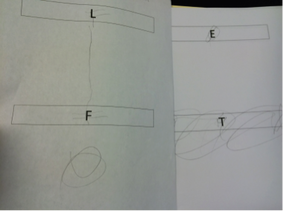|
SFSS is looking forward to continuing our exploration of executive functions both in and out of school. Executive functions are necessary for human beings to understand and perform tasks. In a world with increasingly more and more information available - that is more and more accessible, it is the ability to use information effectively that counts. Executive Functions have their own developmental course throughout childhood, adolescence and into young adulthood. As the brain structures are developed so are the EFs. EFs are part of the neural circuits routed in the frontal lobes. They need to be taught and they need to be practiced as the child grows. Our upcoming parent series will focus on how to support your child in building EF’s and EF skills, such as working memory, sense of time, prospective memory, self activation, emotional self- control, hindsight & forethought and real life applications & exercises. The 6 week series begins on Friday Jan.30. SFSS Department, Celebrate the Children
0 Comments
Connect Experience Write (CEW)® is a research-based proven technique to help our students learn how to write. Some of our students participated in a research study through Kean University to determine the efficacy of the CEW handwriting program for students ages 5-13 who were non-writers. After 8 weeks of participating in the program all of these students are now writing the letters that were worked on during the treatment time! We are so proud of each and every one of them as well as the staff that worked so hard in this process. Check it out! Connect Experience Write (CEW)® is a handwriting program created by occupational therapists Michele Parkins and Carrie Davis. In CEW, students write letters using visual templates while listening to music that simulates the movements needed to form the letters. This combination of visual templates and auditory guides strengthens the visual spatial foundations related to writing.
Keeping relationships and emotional connection at the forefront, CEW classes begin as a group. Students participate in whole body movements to the beat of music to help them identify the top, middle, bottom, left, and right parts of their bodies – all important foundational concepts to writing. They then move their shoulders, elbows, wrists, and fingers to a song that helps them isolate the body parts used when writing. When learning to write the letters, gross motor movements are performed with a partner (called “Mirror Movements”) to the beat of music that simulates the lines needed to form the letters. The students then use templates on a vertical surface to form the letters using hand movements to the beat of the music. Lastly, the students move to tabletop and write the letters on paper templates to the beat of the music. Everyone sings and dances to the sounds of letter formation making emotional connections with each other and the occupation of writing. Teachers, aides, therapists, and students have all been “caught” singing the songs of CEW in hallways around the school! Fun is had by all! We would like to thank the families that gave permission for their students to participate in this research project. You can learn more at connectexperiencewrite.com. Michele Parkins, Occupational Therapist, Celebrate the Children |
AuthorsContributions to this blog are made by Celebrate the Children's highly talented, interdisciplinary team and wonderful families. Archives
January 2022
Categories
All
|
|
OUR SCHOOL
|
UPCOMING EVENTS
Ride For Autism
Saturday, May 4, 2024 Let's Play! 20th Anniversary Gala
Thursday, May 16, 2024 |
CONTACT
230 Diamond Spring Road
Denville, New Jersey 07834 ph: (973) 989.4033 fax : (862) 244.4969 |
|
Interested in learning more about our program?
|
Anti-bullying Coordinator:
Jennifer Carucci jcarucci@celebratethechildren.org 973-989-4033 Ext 413 |
2023 Celebrate the Children











 RSS Feed
RSS Feed

